油鹳视频 Microservices explained - the What, Why and How?
https://www.youtube.com/watch?v=rv4LlmLmVWk&t=2s
microservices 是一种软件体系结构, microservices architecture(微服务架构) 是与传统的 monolithic architecture(整体式架构,一体式架构) 相对而言的。简单地说,微服务架构就是将一个大的 app 进行拆分,分成若干小的的应用程序,各自独立开发部署。
1 一体式架构 monolithic architecture
1.1 一体式架构的特点
- 所有组件都合属于一个单一的整体: user-auth, product-catalog, shopping-cart, payment…
- 所有组件都作为一个整体进行开发,部署以及扩展。
- App 各组件必须使用同一技术栈。
- 组件相互依存,各个组件开发团队必须小心避免影响到其他团队的开发。
- 一个组件被修改,整个 app 重新部署。
1.2 一体式架构面临的挑战
- app 太大太复杂
- 各个组成部分纠缠在一起
- 如果需要扩展就必须扩展整个 app,不能是单个模块,单个服务。
- 不同的组件依赖于相同的第三方组件,然而各自依赖的版本却不同,该如何解决这个问题?

- 任何组件发生改变,整个 app 必须重新测试,重新构建,重新部署。
- 任何模块的 bug 都能让整个 app crash。
为了应对如上问题,出现了 microservices architecture 微服务软件架构 。
2 微服务架构 microservices architecture
使用微服务架构,将一体式的 app 进行拆分,分成多个更小的、独立的应用程序 / 微服务,这些相互独立的微应用程序共同组成一个大型的 app。
这些不同的微服务可以由不同的 team 使用不同的技术栈独立进行开发部署。
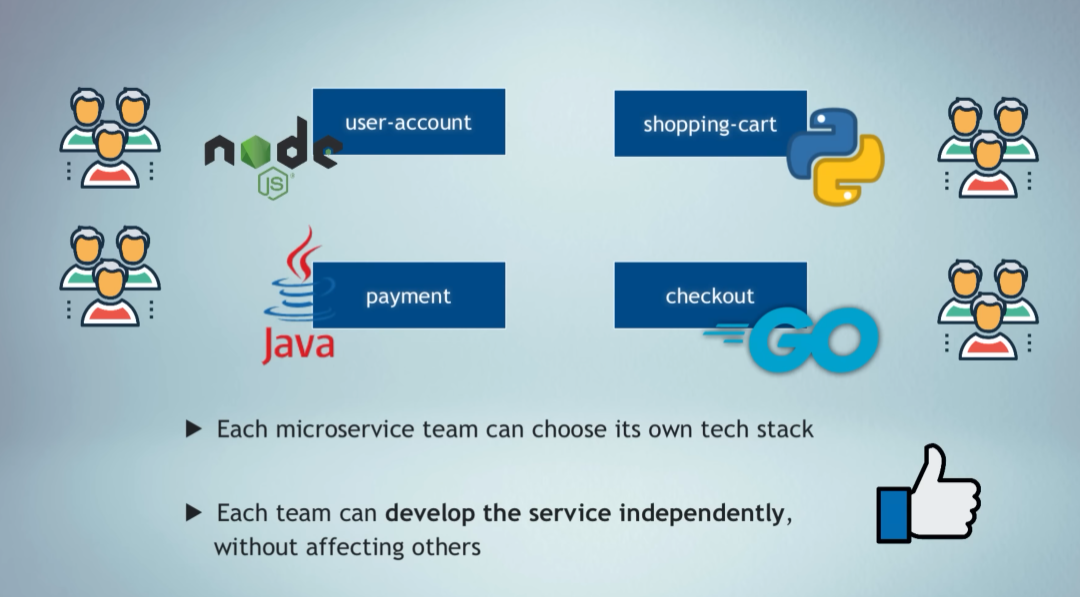
要使用这种架构,需要考虑如下问题:
-
如何拆分 app?
-
要拆分成多少个 microservices?
-
microservices 的规模?
-
如何组织这些 microservices?
-
这些被拆分的 microservices 之间如何通信?
2.1 app 的拆分
根据业务功能对 app 进行拆分,以在线购物 app 为例,拆成 user, products, shopping carts, checkout 等不同的 micorservice,一个 micorservice 负责一项特定的工作。
各个 micorservice 高内聚,micorservice 之间低耦合,各个 micorservice 的开发、部署与扩展与其他 micorservice 互相独立。各个 micorservice 也因此拥有各自独立的版本,发布周期各自独立,如果更新并部署 一个 micorservice,其他 micorservice 不受影响。

2.2 微服务之间如何通信
2.2.1 使用 API 调用通信
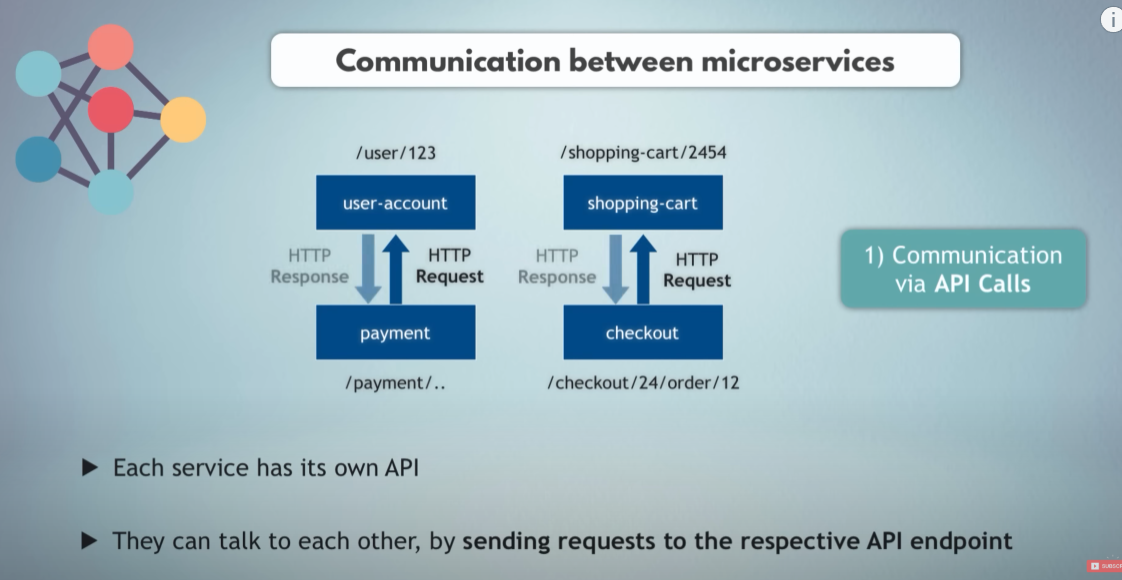
各个微服务之间使用 API 通信,这种通信方式为同步通信。
2.2.2 使用 Message Broker 通信
一种 Message Broker: RabbitMQ


微服务首先与 Message Broker 通信,再由 Message Broker 转发,这种通信方式为异步通信。
2.2.3 使用服务网格 service mesh 进行通信
这种通信方式也被 Kubernetes 广为使用。
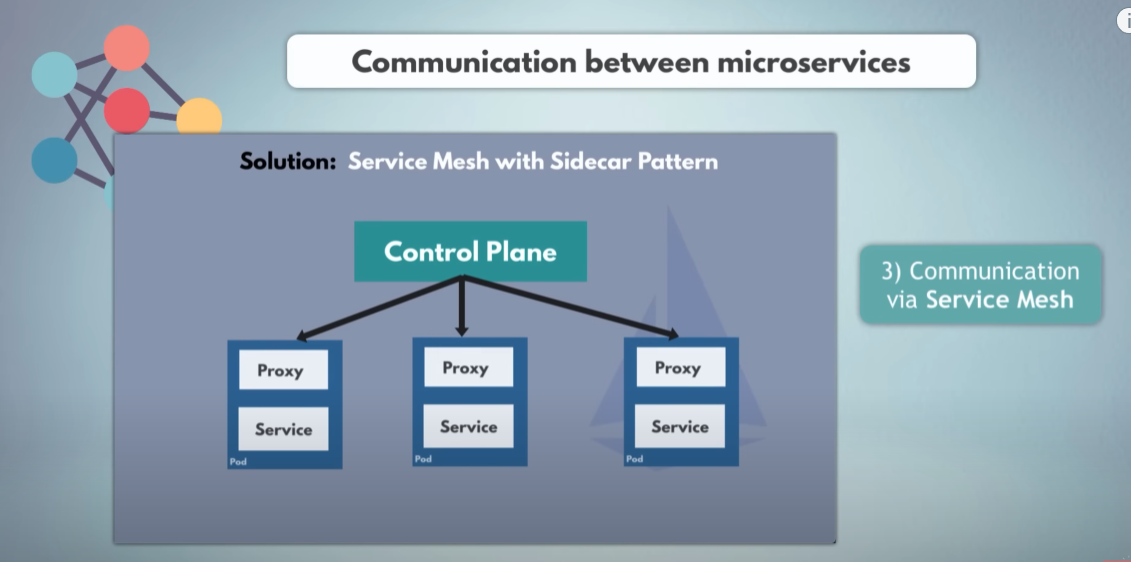
3 微服务架构的缺点以及解决方案
微服务架构本质上是一个分布式系统,这种体系结构比整体式架构复杂。首先需要配置各个微服务之间的通信,而且监视分布在多个服务器上的微服务实例也非易事。
Kubernetes 是运行大型微服务应用程序的完美平台, 除此以外, HashiCorp 也可以用于微服务架构开发。

4 微服务的 CI/CD 管道
CI /CD: Continuous Integration/ Continuous Delivery
持续集成 / 持续交付,
( delivery: 分发,交付,部署 )
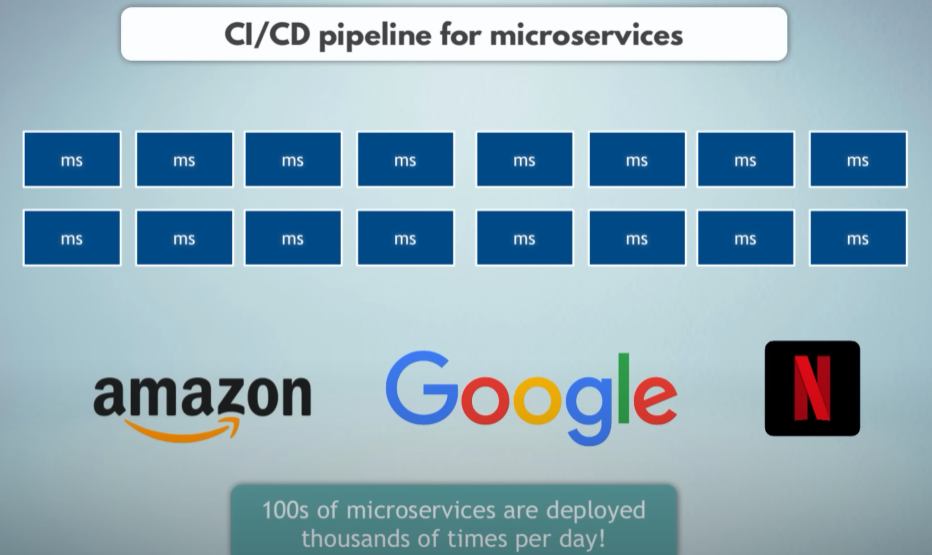
一些大型应用程序由上百个 microservice 组成,每天进行数千次的部署,CI/CD 管道用于配置 release 过程。
5 代码管理:Monorepo vs Polyrepo
组织和管理代码有两种方法, Monorepo (单个库) vs Polyrepo (多个库)
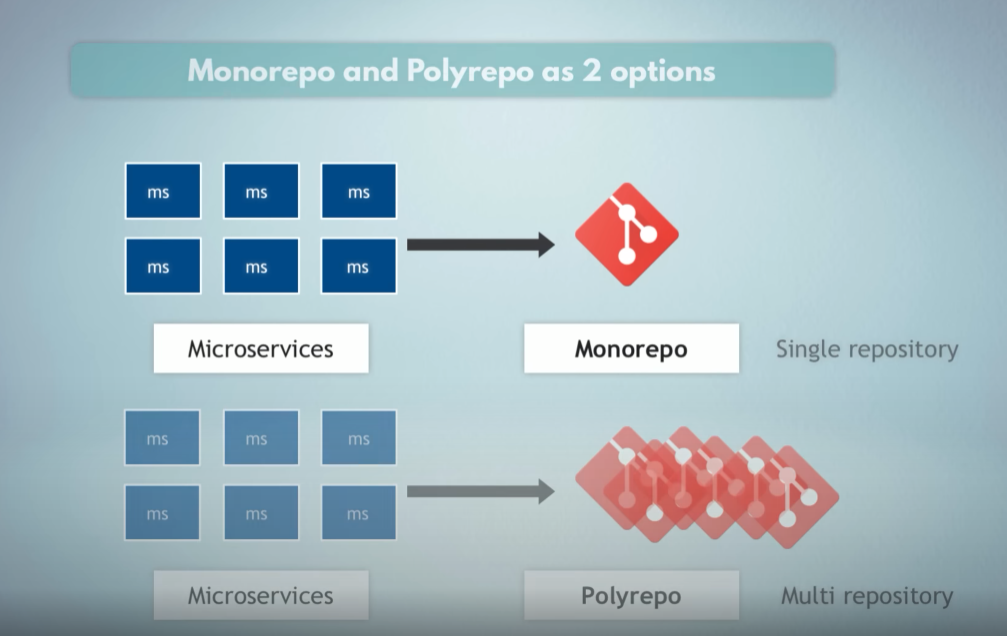
1, 使用单个 git 库,存放若干工程代码。缺点,容易产生高耦合代码,代码库巨大,push pull 等操作变慢,需额外设置 CI/CD 管道。(CI/CD 平台有 gitlab, jenkens) 虽有缺点,但 Google 就使用 monorepo.
2,使用多个 git 库,一个库一个微应用程序。
Gitlab 使用 group 将多个共属于一个app的工程放到相同的组。
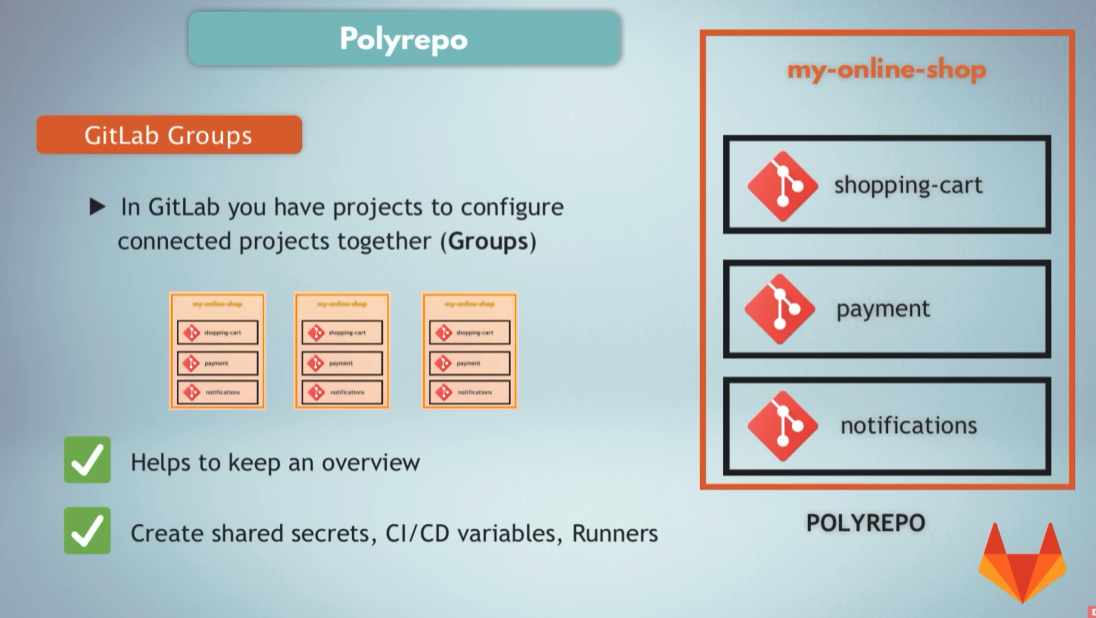
Polyrepo 也有缺点,例如多个项目之间资源共享变得困难,项目之间的切换变得繁琐等等。
所以这两种方法各有优缺点,基本的原则是,小的项目使用单个库 monorepo,如果开发大型 app,有多个 team,使用多个库 polyrepo 则是更好的选择。
- https://aws.amazon.com/cn/microservices/




















 634
634











 被折叠的 条评论
为什么被折叠?
被折叠的 条评论
为什么被折叠?








